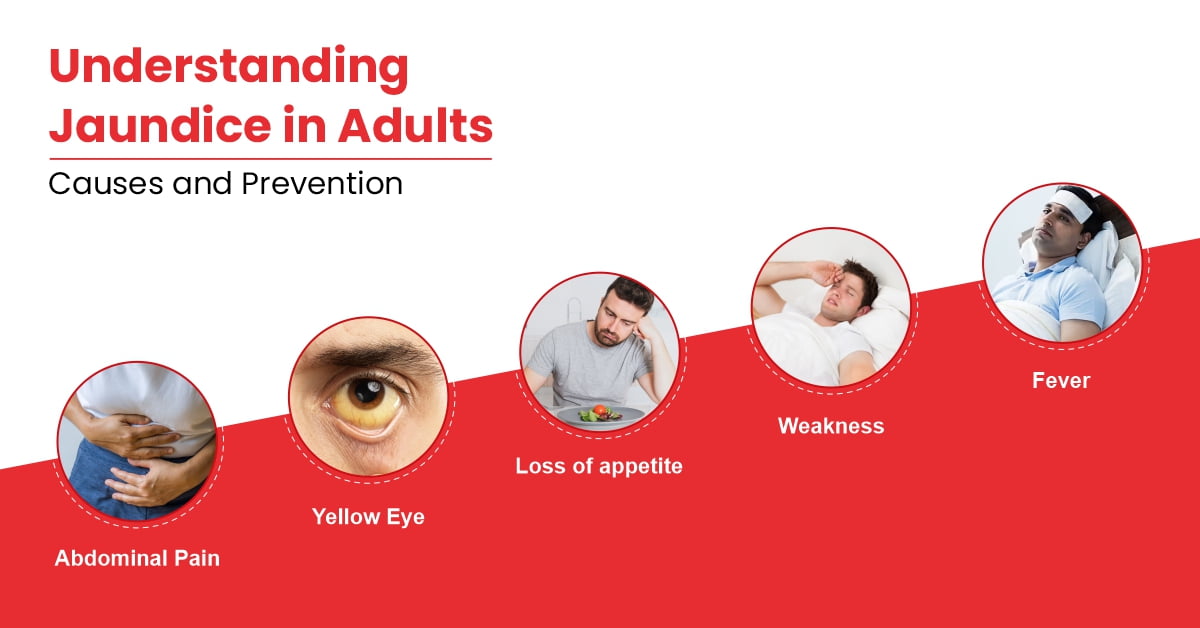


So, you don’t feel like eating anything, there is constant pain in your liver, and you are experiencing inexplicable weight loss and are concerned! And why shouldn’t you be? It sounds serious, and it could even be so. Have you seen a doctor? If not, you better do because it sounds like you are suffering from jaundice and need a timely medical diagnosis and treatment for jaundice in adults.
ARTICLE: Before we proceed to talk about the treatment for jaundice in adults, let us try to understand what jaundice is, why and how it happens, the starting symptoms of jaundice, jaundice recovery time, and the jaundice food to avoid.
The paleness in a person’s eyes, skin, and body fluids indicates the onset of jaundice in him. Jaundice is an indicator of an underlying problem requiring medical intervention.
Jaundice occurs in adults when there is an excess of bilirubin in the body. Bilirubin is the waste of expired red blood cells that is considered potentially toxic, so much so that the body requires several excretion levels and detoxification to remove it. According to research, it has antioxidant properties that can prevent cardiovascular disease. But its buildup in the body can cause liver infections, hepatitis, and jaundice.
Jaundice is indicative of liver disease. The liver’s damaged cells cannot remove bilirubin, which enters the blood. This causes jaundice. But this is not the sole reason. Side effects of medications and other ailments, including cirrhosis, heredity, autoimmune diseases, and other medical conditions, can also cause jaundice.
Some of the starting symptoms of jaundice include:
1. Pale skin and eyes
2. Paleness of body fluids
3. Fever
4. Nausea
5. Appetite loss
6. Weight loss
7. Abdominal pain
If you have these, or even some of these, starting symptoms of jaundice, you should immediately consult a doctor to get treatment for jaundice in adults. Before exploring the treatment for jaundice in adults, let us try to understand what jaundice is in Hindi, our national language.
पीलिया क्या है?
किसी व्यक्ति की आँखों, त्वचा और शारीरिक स्राव में पीलापन आना, उसे पीलिया होने का संकेत देता है। पीलिया एक अंतर्निहित समस्या का संकेत है जिसके लिए चिकित्सा हस्तक्षेप की आवश्यकता होती है।
वयस्कों में पीलिया का कारण: वयस्कों में पीलिया तब होता है जब शरीर में बिलीरूबिन की अधिकता हो जाती है। बिलीरूबिन, समाप्त हो चुकी लाल रक्त कोशिकाओं का अपशिष्ट है और इसे संभावित रूप से विषाक्त माना जाता है, इतना अधिक कि शरीर को इसे निकालने के लिए कई स्तरों पर उत्सर्जन और विषहरण की आवश्यकता होती है। शोध के अनुसार, इसमें एंटीऑक्सीडेंट गुण होते हैं जो हृदय संबंधी बीमारियों को रोक सकते हैं। लेकिन शरीर में इसके जमाव से लिवर में संक्रमण, हेपेटाइटिस और पीलिया हो सकता है।
पीलिया लिवर की बीमारी का संकेतक है। लीवर की क्षतिग्रस्त कोशिकाएँ बिलीरुबिन को बाहर नहीं निकाल पातीं। इस लिए यह रक्त में प्रवेश कर जाता है। इससे पीलिया होता है। लेकिन यह पीलिया का एकमात्र कारण नहीं है। पीलिया दवाओं के साइड इफ़ेक्ट और सिरोसिस, आनुवंशिकता, ऑटोइम्यून रोग और अन्य बीमारियों के कारण भी हो सकता है।
पीलिया के लक्षण: पीलिया के लक्षण निम्न दिए गए हैं:
1. त्वचा और आंखों का पीला पड़ना
2. शारीरिक स्राव में पीलापन
3. बुखार
4. मतली
5. भूख न लगना
6. वज़न घटना
7. पेट में दर्द
अगर आपको इन सभी या इनमें से कुछ पीलिया के लक्षण हैं तो आपको तुरंत किसी डॉक्टर को दिखाना चाहिए।
JAUNDICE TREATMENT: It is not jaundice, as such, that is treated, but the underlying medical condition that it indicates. Besides rest and adequate consumption of fluids, the diet you take during this time helps ascertain how quickly you will recover. Healthy food has a huge role to play in the treatment for jaundice in adults. Remove fatty, spicy, and oily foods from your diet if you have been diagnosed with jaundice.
The jaundice food to avoid includes:
1. Alcohol
2. Tea
3. Coffee
4. Beef and pork
5. Canned and processed foods
6. Beans, chickpeas, and vegetables with starch
7. Complex carbohydrates
These foods, being hard to digest, should be avoided in jaundice, as they can make things worse.
CONCLUSION: Leading a healthy lifestyle by including a regular exercising regime in your daily schedule, consumption of healthy food, and adequate water intake can help keep your liver healthy, thereby keeping jaundice at bay and allowing you to live life to the fullest. or Feel free to reach out our Best Doctor.
September 30, 2024
Recognize the Signs: Understanding Appendicitis Pain Symptoms
September 24, 2024
Unveiling the Truth: I-Pill Side Effects Every Woman Should Know
We use cookies to enhance your experience. By clicking "Accept", you agree to our use of cookies.